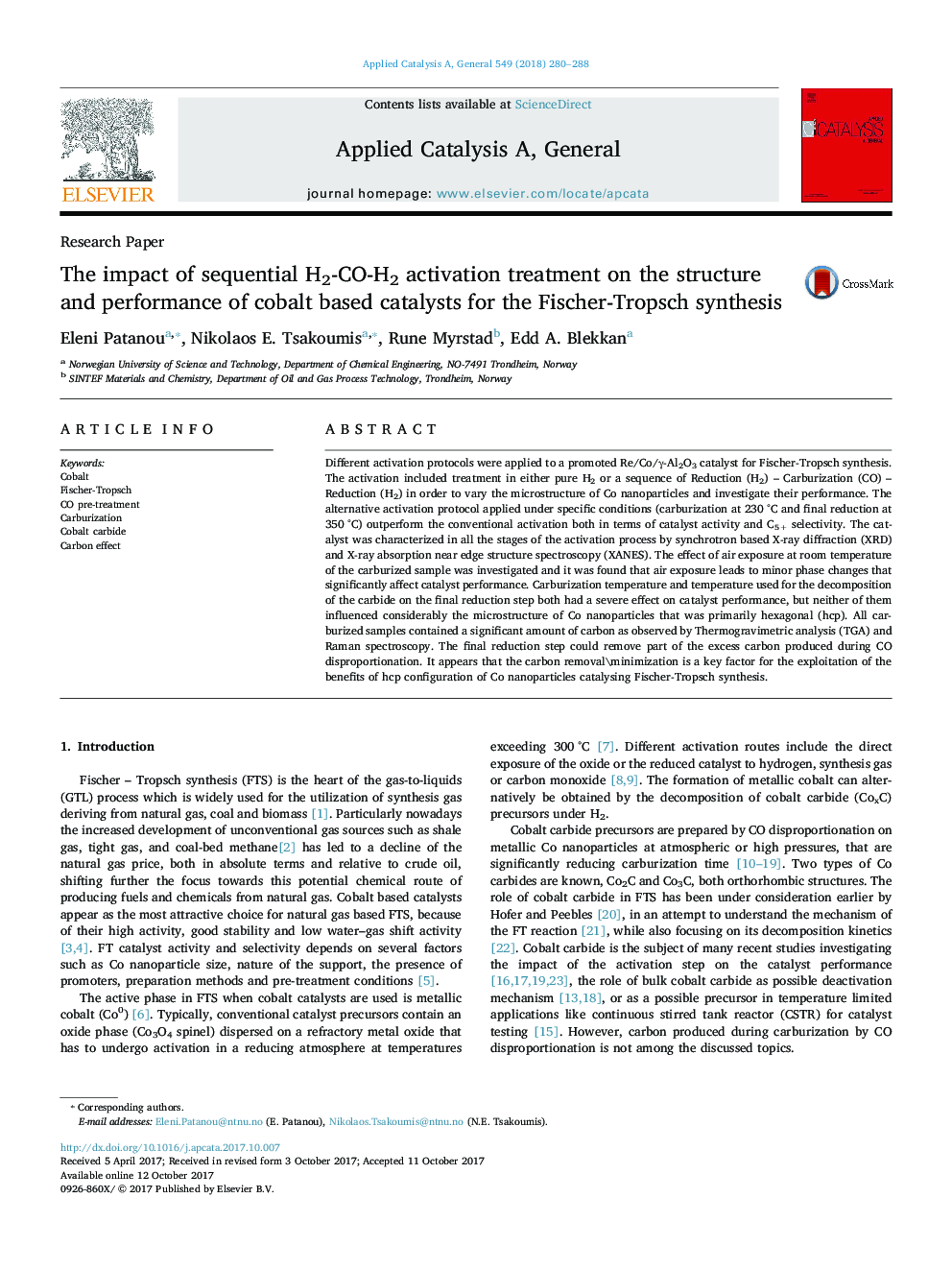| Article ID | Journal | Published Year | Pages | File Type |
|---|---|---|---|---|
| 6453232 | Applied Catalysis A: General | 2018 | 9 Pages |
â¢H2-CO-H2 activation protocol is compared with H2 activation on a Re/Co/γ-Al2O3 catalyst.â¢Carburization of fcc-Co leads mainly to Co2C orthorhombic structures and various types of carbon.â¢Co2C decomposition under H2 leads to structures rich in hcp-Co, independently on the temperature applied.â¢In situ Co XANES during air exposure of Co2C revealed minor structural changes that significantly affect FTS catalysis.â¢Co2C formed by CO disproportionation on Co metal cannot be used as catalyst precursor.â¢The CO disproportionation step leads to formation of H2 resistant carbon that significantly affects FTS.
Different activation protocols were applied to a promoted Re/Co/γ-Al2O3 catalyst for Fischer-Tropsch synthesis. The activation included treatment in either pure H2 or a sequence of Reduction (H2) - Carburization (CO) - Reduction (H2) in order to vary the microstructure of Co nanoparticles and investigate their performance. The alternative activation protocol applied under specific conditions (carburization at 230 °C and final reduction at 350 °C) outperform the conventional activation both in terms of catalyst activity and C5+ selectivity. The catalyst was characterized in all the stages of the activation process by synchrotron based X-ray diffraction (XRD) and X-ray absorption near edge structure spectroscopy (XANES). The effect of air exposure at room temperature of the carburized sample was investigated and it was found that air exposure leads to minor phase changes that significantly affect catalyst performance. Carburization temperature and temperature used for the decomposition of the carbide on the final reduction step both had a severe effect on catalyst performance, but neither of them influenced considerably the microstructure of Co nanoparticles that was primarily hexagonal (hcp). All carburized samples contained a significant amount of carbon as observed by Thermogravimetric analysis (TGA) and Raman spectroscopy. The final reduction step could remove part of the excess carbon produced during CO disproportionation. It appears that the carbon removal\minimization is a key factor for the exploitation of the benefits of hcp configuration of Co nanoparticles catalysing Fischer-Tropsch synthesis.
Graphical abstractDownload high-res image (150KB)Download full-size image
